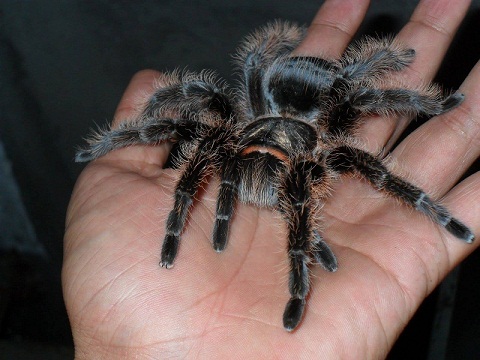By JOHN PAUL JUSTINIANI and HAZEL P. VILLA
Photos by JOHN PAUL JUSTINIANI
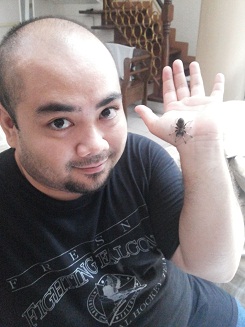
SOME people just want something different.
They don’t like the usual cuddly dogs and cats for pets.
Exotic pets like scorpions and spiders are becoming popular nowadays. Gone are the days when spiders are just being hunted for “pa-upas” (spider fighting) purposes in some towns.
In the animal kingdom, scorpions and spiders belong to the family of invertebrates family, meaning they do not have backbones.
Here are three things you should consider before you get yourself a cool exotic pet: price, food and shelter.
If you are living on a tight budget, there are exotic pets available for as low as P50. Local breeders have successfully “popped (hatched)” close to over 1,000 Brachypelma Albopilosum spiderlings and over 400 Hottentotta Hottentotta scorplings.
With their increasing numbers, the demand for spiderlings and scorplings (or slings/babies) has rapidly dropped, forcing breeders to sell them for as low as P50/sling for both species. Other common spider and scorpion species are also being bred and are readily available from P300 to P1500 per sling. Aside from the number of available specimens in the market, price is also affected by size, age and gender of the animal.
To house common scorpions and spiders, you only need a bin that is at least 10 inches long, eight inches wide and eight inches high. It is as big as a letter-size bond paper.
For beginners, a plastic, semi-transparent 6.3 liter bin that costs about P60 in department stores is recommended. The price of acrylic and glass enclosures with screen tops cost at least P350– a bit pricey, but more presentable than plastic bins.
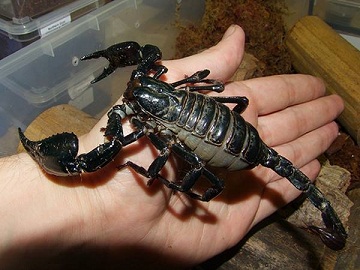
Punch a couple of small holes to allow proper ventilation. Good air circulation prevents the growth of molds and fungi and regulates the humidity level of your enclosure.
On the “floor” of your bin, you will need to pack at least an inch and a half of clean, moist (not dripping wet!) cocopeat— a cheap, organic substrate made from pulverized coconut husks available at most gardening supply stores. A block of dried and compacted cocopeat costs around P50. Cocopeat works great for keeping invertebrates as it can retain moisture for a long time.
Inverts very rarely drink but having clean water ready is always a good thing. So you need to provide a water dish (with pebbles—to keep your pet from drowning).
A rock, a piece of driftwood or broken clay pot is also a must-have in your enclosure. This provides a place for your invert to hide and rest, or, a place to escape from getting too wet.
Terrestrial spider species live underground. For these tarantulas, you will need to pack in more peat to allow them to make their homes. Some tarantulas are, however, arboreal; found living up in trees. It would be best for you to provide an enclosure that is taller with a piece of driftwood.
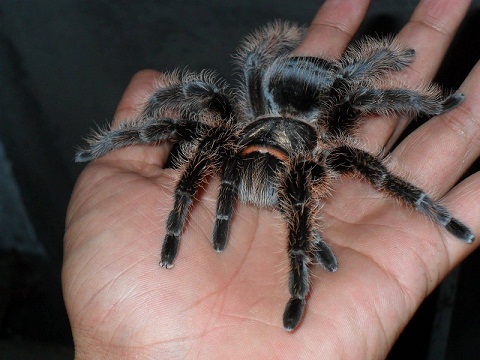
The same is true for scorpions. There are terrestrial scorpions that prefer to live under rocks and burrows like the tropical Heterometrus Longimanus. Bark scorpions like the semi-arid Rhopalurus Junceus, hide under the woody skin of the trees where they live.
With the enclosure size, orientation and accessories all set up, the other things you will need to consider are proper humidity, ventilation, protection and security.
Maintaining the enclosure’s moisture and humidity levels is very important to inverts. Some spiders and scorpions thrive in the tropics and love moisture but some are arid species and prefer desert-dry settings.
Humidity is something that you must always keep in check. Invertebrates molt. This means that when they grow bigger, they shed their old skins. Poorly managed humidity could lead to a bad molt . They could come out of their old exoskeletons or exuviums with missing limbs or, worse, not come out at all (because they’re dead!).
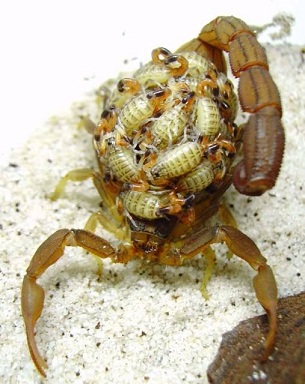 One very good way to maintain moisture and humidity is to spray half of your bin’s substrate with clean water at least once a week. This gives your exotic pet the liberty to find the best areas most suited to its needs.
One very good way to maintain moisture and humidity is to spray half of your bin’s substrate with clean water at least once a week. This gives your exotic pet the liberty to find the best areas most suited to its needs.
To keep ants and other animals away, smear a thick layer of petroleum jelly half an inch from the bottom of the exterior of your bin. Make sure the lid or latch is securely locked at all times and that your enclosure is always clean.
As for food, popular feeders or prey items are roaches (Blatta Lateralis), super worms (Zophobas Morio) and meal worms (Tenebrio Molitor)). The most you will spend is P5 for an adult roach. Feeders are available in most pet shops. The rule of thumb is, a feeder should not be bigger than your invert’s abdomen.
Inverts only need to be fed once a week. They have the amazing ability to slow down their metabolism. This ensures that they grow and age slower. Some tarantulas, especially females, live up to 20 years.
